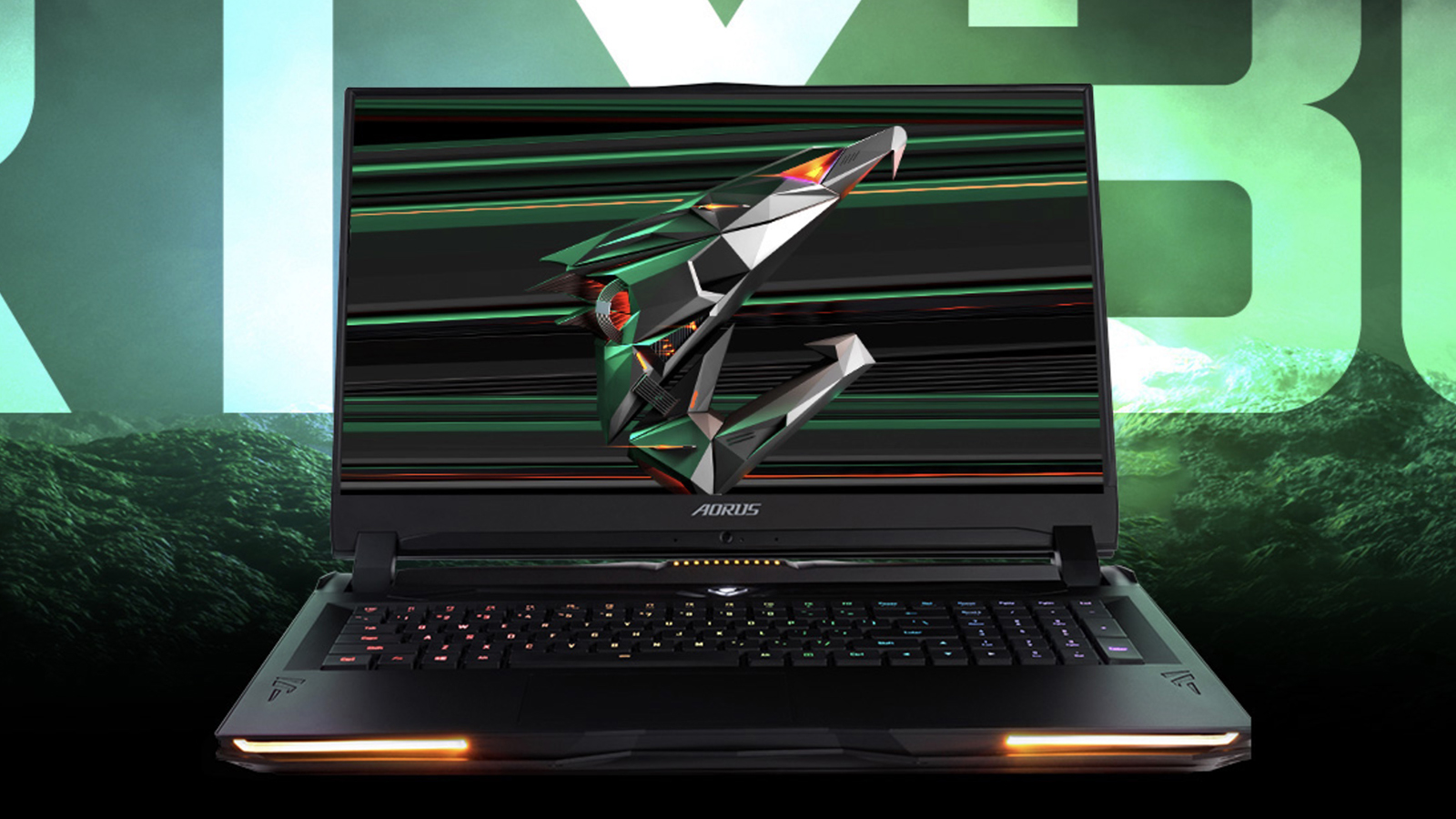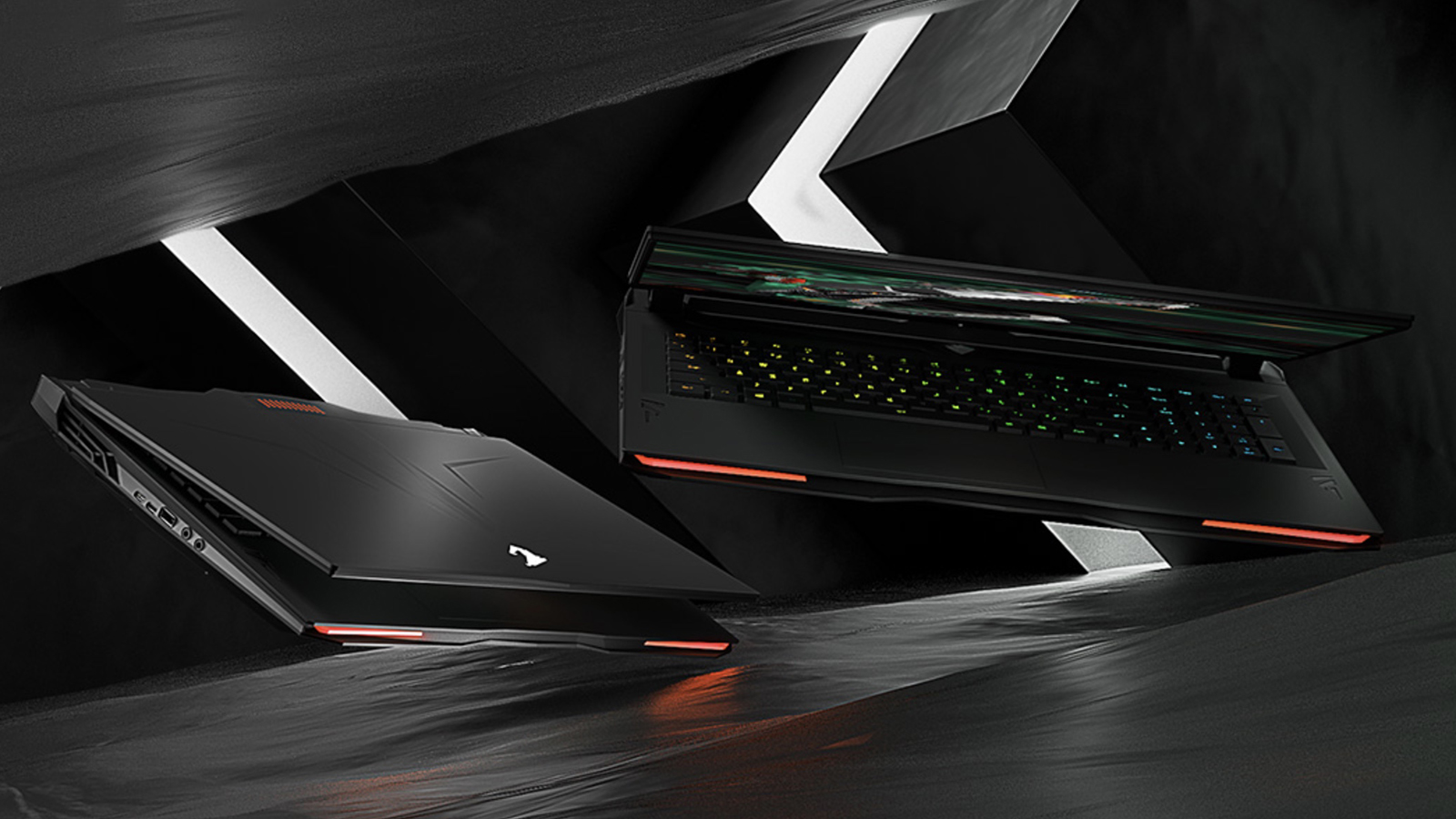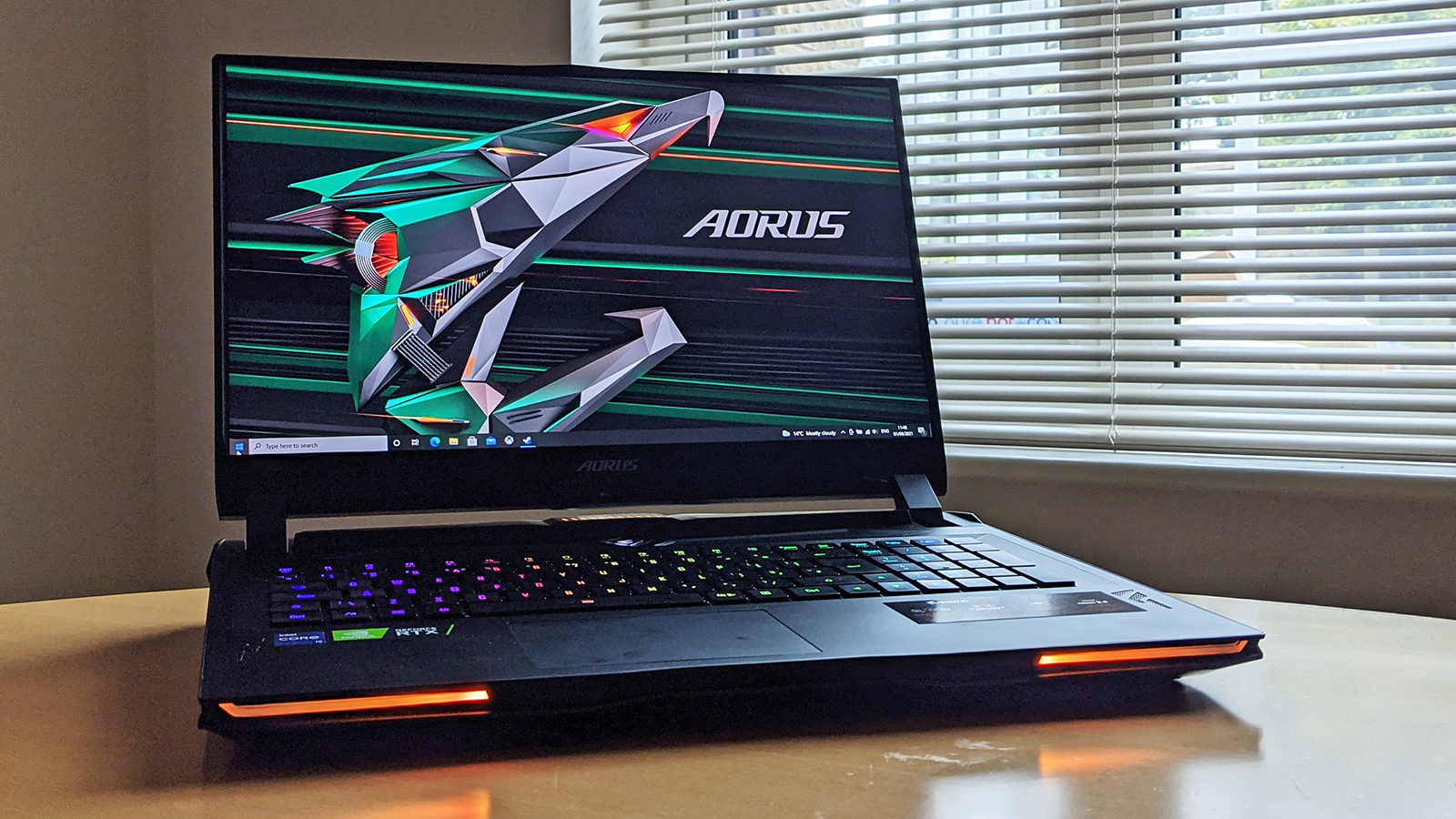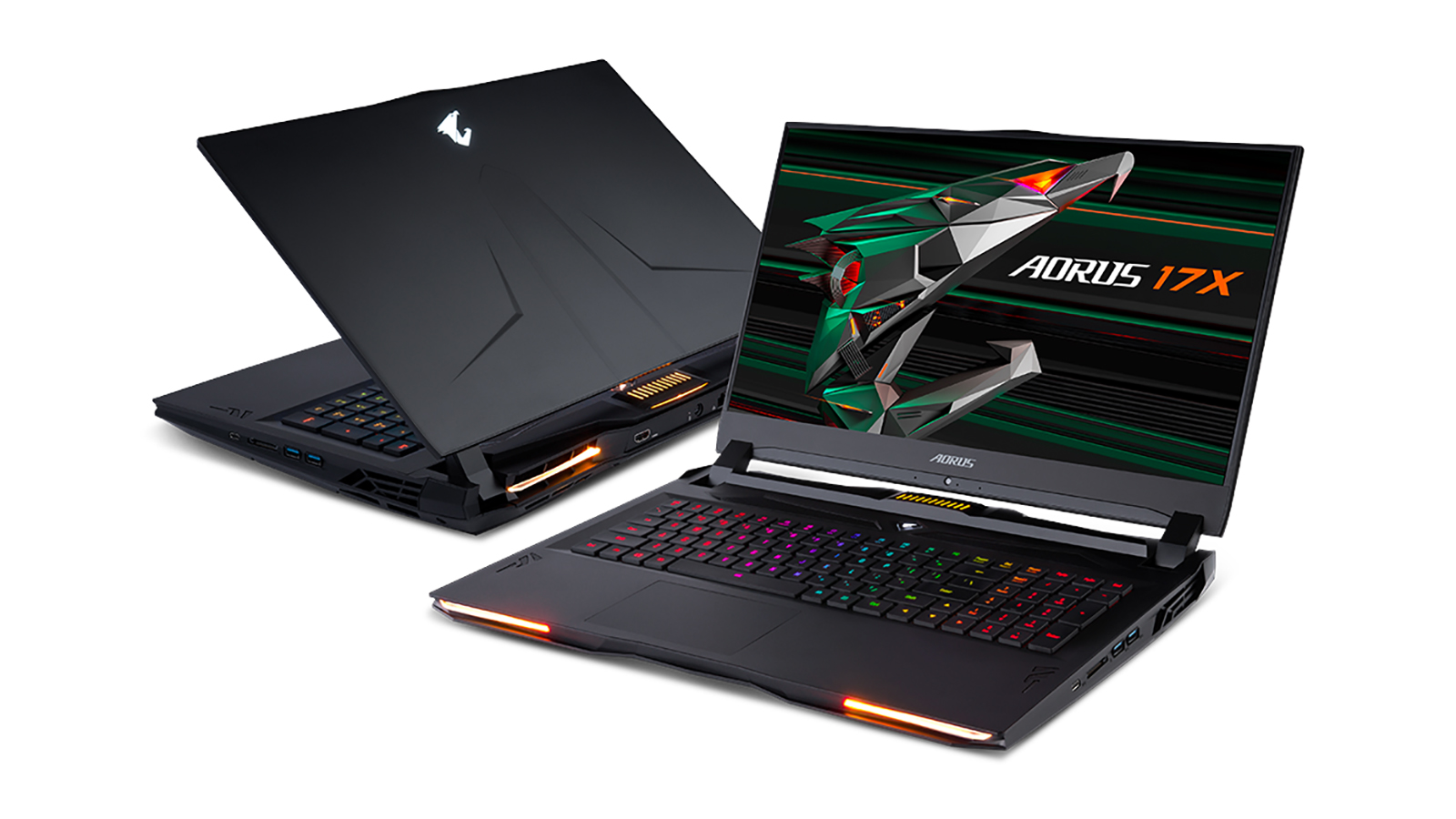Gigabyte Aorus 17X review: an absolute beast of a gaming laptop
The Gigabyte Aorus 17X gives you as much power as you could ever need


The Gigabyte Aorus 17X is packed with top-spec components from Intel and Nvidia, and it shows in the phenomenal performance you get on the very best and most demanding games. It's a brilliant gaming laptop – but it's also going to cost you a lot of money.
-
+
Top, top performance
-
+
Cool lighting system
-
+
Fantastic 17.3-inch screen
-
-
Big and heavy
-
-
Odd webcam placement
-
-
It'll cost you
Why you can trust T3

The Gigabyte Aorus 17X makes a good claim to be not just one of the best gaming laptops you can buy, but perhaps the very best gaming laptop you can buy at the moment – certainly in terms of the level of performance you're going to be able to get out of it.
It's the Aorus 17X YD configuration that we're testing and reviewing here, which comes with a blazing fast 11th-gen Intel Core i9-11980HK processor, a huge 64GB of RAM, and an Nvidia GeForce RTX 3080 GPU with 16GB of its own memory. It's an absolute beast.
In our Gigabyte Aorus 17X review, we'll explain everything you need to know about this gaming laptop – from how long you can expect the battery to last between charges, to how much you're going to have to pay to get hold of it (we'll give you a clue – it's a lot).
Gigabyte Aorus 17X review: screen and design

There are some gaming laptops that you can take into the office or the lecture theatre and pass them off as general purpose computers – but that's not the case with the Gigabyte Aorus 17X. It's large, and bright, with RGB lighting behind the individual keys, just underneath the screen, and on the front of the laptop too. With plenty of angular black plastic and some large cooling vents, this is very much a gaming laptop in terms of its overall aesthetics.
It's not really a subtle design, but we like it nevertheless. Remember you're getting a 17-inch laptop here: dimensions of 396 mm x 293 mm x 38 mm (15.59 inches x 11.53 inches x 1.49 inches) and a weight of 3.75 kg (8.26 lbs) mean this isn't an ideal laptop for carrying around the house or taking on the commute with you. You can of course transport it from place to place fairly easily, but it's a long way from being a lightweight laptop, and if portability is paramount you might want to drop down to a 15-inch model.
The large size of the Aorus 17X has its benefits, including lots of room for ports – you get three USB 3.2 Gen 1 Type-A ports, two USB 3.2 Gen 1 Type-C ports, one Thunderbolt 4 Type-C port, one HDMI 2.1 port, one headphone out port, one microphone in port, one UHS-II SD card reader slot and an Ethernet port for a faster, more stable connection to the web if the Wi-Fi 6 integration isn't really doing it for you. There's a webcam too, but it's positioned below the monitor, so it's often looking up your noise.
As for the display, it's a rather fantastic one. The 17.3-inch, 1,920 x 1,080 pixel IPS LCD panel runs at an impressive refresh rate of 300Hz, and shows off games brilliantly (it's not bad when it comes to photos, movies and websites either). Colours are vibrant and rich, blacks are deep and distinct, and there's no hint of ghosting or lag as characters, objects and scenes speed by. The bezels around the sides are nice and thin too, which we like.
- All the best student laptops are right here
Gigabyte Aorus 17X review: performance and features

Simply put, this is one of the most powerful gaming laptops on the market at the moment: our review unit (the YD model) came with an 11th-gen Intel Core i9-11980HK processor, 64GB of RAM, and an Nvidia GeForce RTX 3080 GPU that is very happy running the most demanding games out there at the moment. If you know your specs you'll know how impressive that is for a gaming laptop – if you don't, let us assure you that you're getting a phenomenal amount of processing and graphics power.
In the Time Spy benchmark test from 3DMark, the Aorus 17X scored a huge 11,746 when we ran it – better than 93 percent of results in the Time Spy database. For comparison purposes, the high-end gaming PC average score is 11,085, the gaming PC average score is 9,216, and the gaming laptop average score is 5,730. As we've already mentioned, this is a beast of a machine that will even outdo a lot of desktop rigs with more space and more elaborate cooling systems available to them.
This laptop is going to run your AAA games at their best settings and hardly break a sweat: we were seeing frame rates of 60-80 frames per second in the hugely demanding Cyberpunk 2077, and 90-110 frames per second in the slightly older and less intensive Red Dead Redemption 2. That's with the graphics options almost maxed out in those two games as well, and while there was a fair bit of fan noise throughout, it never became a major problem that would distract you from your gameplay (no doubt thanks to the wind pipes and vapour chamber that Gigabyte has fitted in here.
The Omron-switch mechanical keyboard that Gigabyte has fitted here is a dream to use too, offering superb precision and an excellent feel, and the trackpad isn't bad either. As for battery life, we saw drops of about 22 percent per hour when streaming videos – that's with the screen at full brightness but the system otherwise in battery saving mode. When you're gaming, you're going to get significantly less time between charges, as the CPU and GPU will still be in demand.
- The best 2-in-1 laptops, ranked
Gigabyte Aorus 17X review: price and verdict

There really are very few faults to talk about with the Gigabyte Aorus 17X: it's just about the most gaming power you can get inside a laptop at the moment, and if you have the budget to afford it, it's got to be near the top of your shortlist. Top-tier games run very smoothly – just about as smoothly as we've ever seen during our gaming laptop tests – and the laptop doesn't show any signs of struggling in terms of excessive noise or heat during gaming sessions.
If you're looking for reasons not to buy this laptop, the design (and webcam placement) won't be to everyone's tastes – it's a big and heavy laptop. It's also fair to say that this is going to be too much for some people: you can get perfectly respectable gaming performance in a laptop that costs much less, but you might have to dial down the quality settings a little and put up with lower frame rates.
You get ray tracing, DLSS AI acceleration, the latest Max-Q performance technologies, an ESS Sabre Hi-Fi DAC audio chip (with 24bit/192KHz support) and a PCIe Gen 4 SSD, on top of some fantastic Nvidia and Intel components and a superb 1080p screen that gives your games lots of room – Gigabyte really has crammed everything in here. You'll be able to play the best games on the best settings on this for years to come, and it's going to outperform a lot of desktop gaming rigs as well.
This all comes with a cost of course, and it's a high one. Check the widgets on this page for the latest pricing, but at the time of writing you're looking at paying very close to £4,000 or $4,000 to get your hands on this beast of a laptop. In other words, you can buy a decent car for the price of the Gigabyte Aorus 17X, but if you're keen for your hard-earned money to go towards one of the most powerful gaming laptops on the planet, then this is where you want to invest.
- Check out the best laptops on the market
Sign up to the T3 newsletter for smarter living straight to your inbox
Get all the latest news, reviews, deals and buying guides on gorgeous tech, home and active products from the T3 experts
Dave has over 20 years' experience in the tech journalism industry, covering hardware and software across mobile, computing, smart home, home entertainment, wearables, gaming and the web – you can find his writing online, in print, and even in the occasional scientific paper, across major tech titles like T3, TechRadar, Gizmodo and Wired. Outside of work, he enjoys long walks in the countryside, skiing down mountains, watching football matches (as long as his team is winning) and keeping up with the latest movies.
-
 Warning: Ciele’s refreshed Elite Collection may cause excessive garment envy on race day
Warning: Ciele’s refreshed Elite Collection may cause excessive garment envy on race dayFlex on your run crew with Ciele’s latest drop
By Matt Kollat Published
-
 Smeg adds a touch of navy sophistication to its iconic breakfast set
Smeg adds a touch of navy sophistication to its iconic breakfast setIt's a minimalist's dream
By Lizzie Wilmot Published
-
 My most anticipated Netflix movie of the year gets a wild new trailer
My most anticipated Netflix movie of the year gets a wild new trailerHavoc looks pretty unbelievable
By Max Freeman-Mills Published